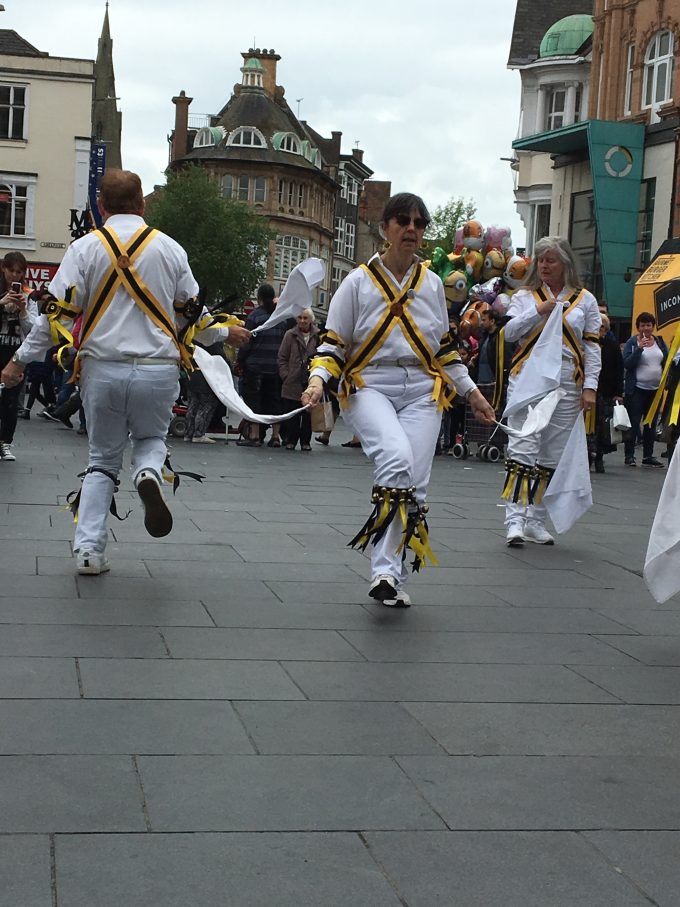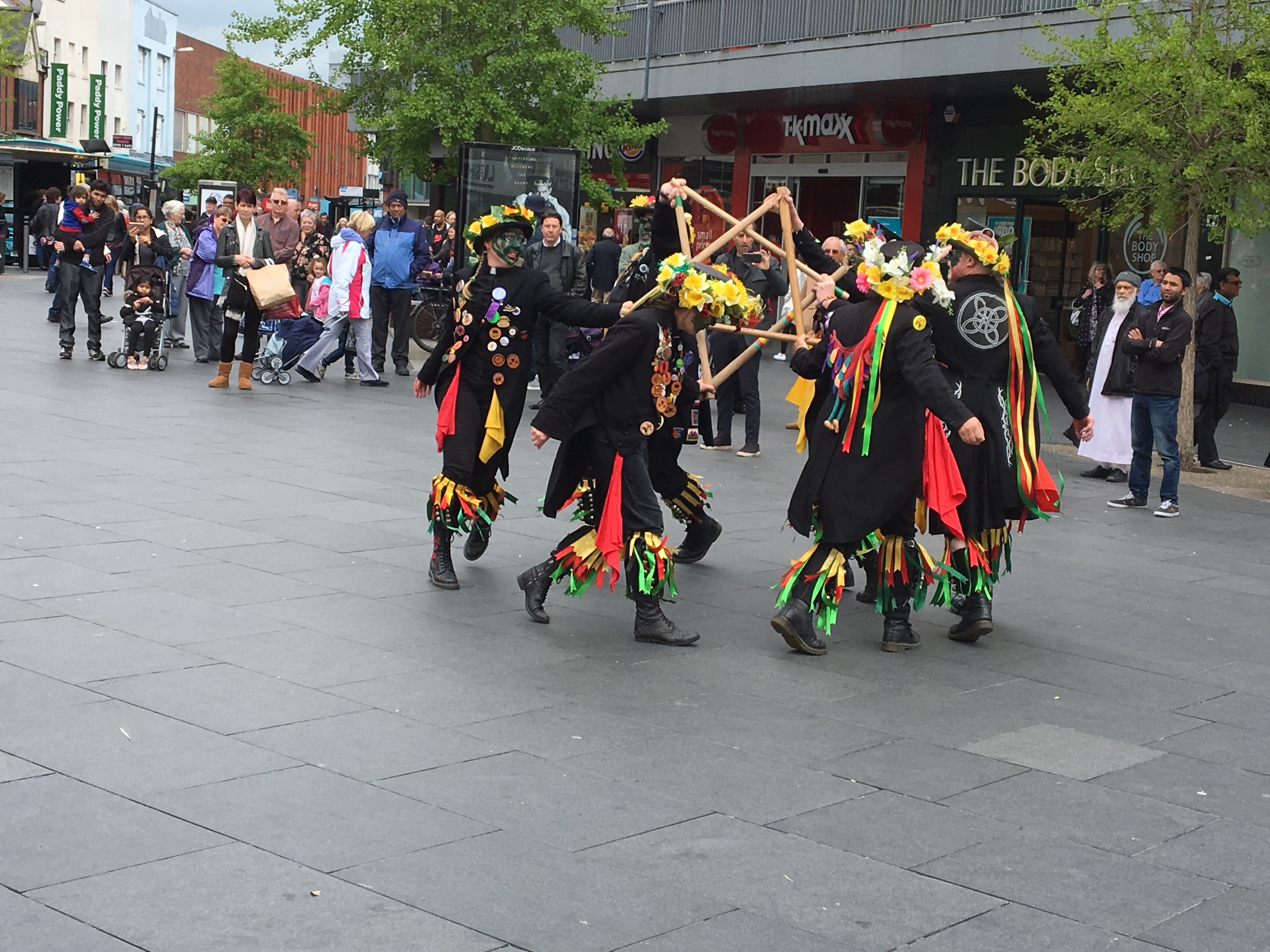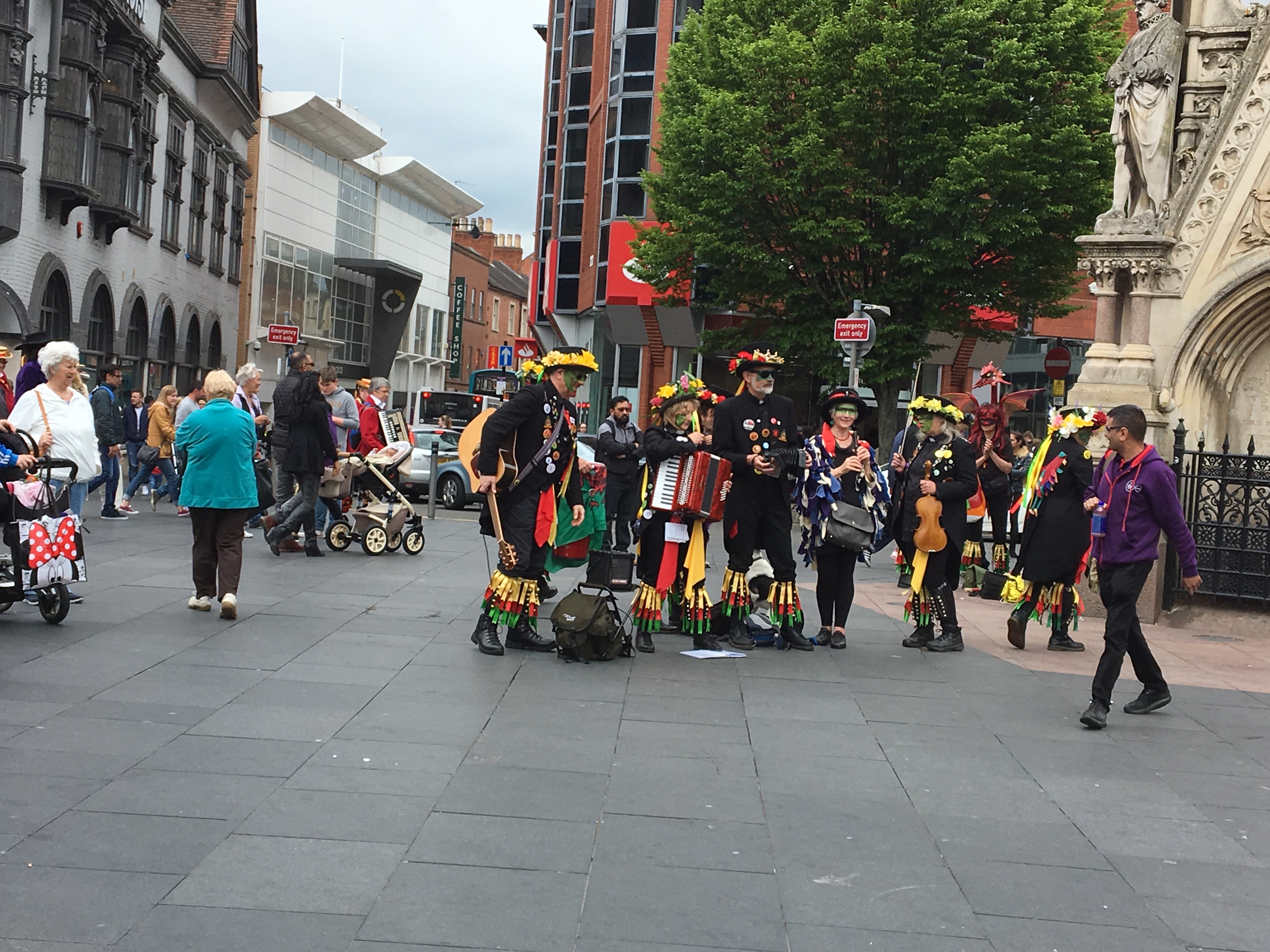At Jumpstart we love to inform you about different styles of dance - it’s amazing…
What is Morris Dancing? A guide
JumpStart Dance Style Guide
Last Saturday (13th May) I was lucky enough to attend the JMO National Day of Dance in Leicester. This annual gathering involved more than 800 men, women and children from 60 groups performing England’s national dances.
Morris Dancing has a long tradition in England and dates back to at least the 15th Century although many believe it began much earlier. The origins of the name ‘Morris’ are uncertain although it is thought to refer to ‘Moor-ish’ dancing, meaning exotic or fantastical. Scholars believe it originally began as a court dance, before transitioning into a more rural folk dance by the 17th century. By the 18th and 19th Centuries, interest in Morris dancing dwindled until the recent revivals over the last 100 years.
The English Folk Dance and Song Society define Morris dance as an ‘energetic, buoyant form of English folk dance performed to lively music in groups or “sides”‘ (efdss.org) and there are many different styles.
Cotswold Morris
This style of Morris is performed by 6-8 dancers, who wear predominantly white clothing with bells and sashes or rosettes. The steps are usually lively and energetic, involving leaps, hops and jumps.
Berkshire Bedlam demonstrating leaps, jumps and claps in their Cotswolds Morris Dance
Cotswold Morris Dances are usually perform with hankies or sticks.

The Earl of Stamford Morris group dancing with hankies
Border Morris
This style of Morris dancing originates from the English / Welsh borders. Dancers often blacken their faces – historically this may have been to disguise themselves to hide their identities or it may be a reference to the mining communities of the time. Border Morris dancers wear tattered jackets and top hats decorated with flowers or feathers.

The blackened faces of the Clerical Error Border Morris group
Other styles include:
- North West Morris – often military and processional in style. Developed out of the mills in North West England
- Long Sword – performed with long rigid swords which the dancers have to step or leap over / under. Originates from Yorkshire
- Rapper Sword – usually performed by 5 dancers who are all linked together by flexible steel swords which they use to create patterns and shapes above their head. This style of dancing comes from the mining communities in the North East of England.
All Morris styles have musical accompaniment which often comprises of a melodeon, accordion or concertina but may also include a fiddle and/or a drum. The dancers also create percussive sound effects with their bells, sticks, claps and clogs (in garland dancing and clog step).

Clerical Error Border Morris’ musical accompaniment
Sometimes the dancers sing at the start of their performance, such as the Anstey Morris Men in the clip below
This guide to dance is the first of a series introducing an eclectic mix of different styles of dance. Watch out for future blogs including:
- Contemporary Dance
- 1940s Swing Dance
- Ballroom Dance
And if you’d like a dance specialist to deliver one of these styles of dance in your school, book one of our JumpStart experience days.
Or we can teach your staff how to deliver these dances in one of our very popular INSET days.

